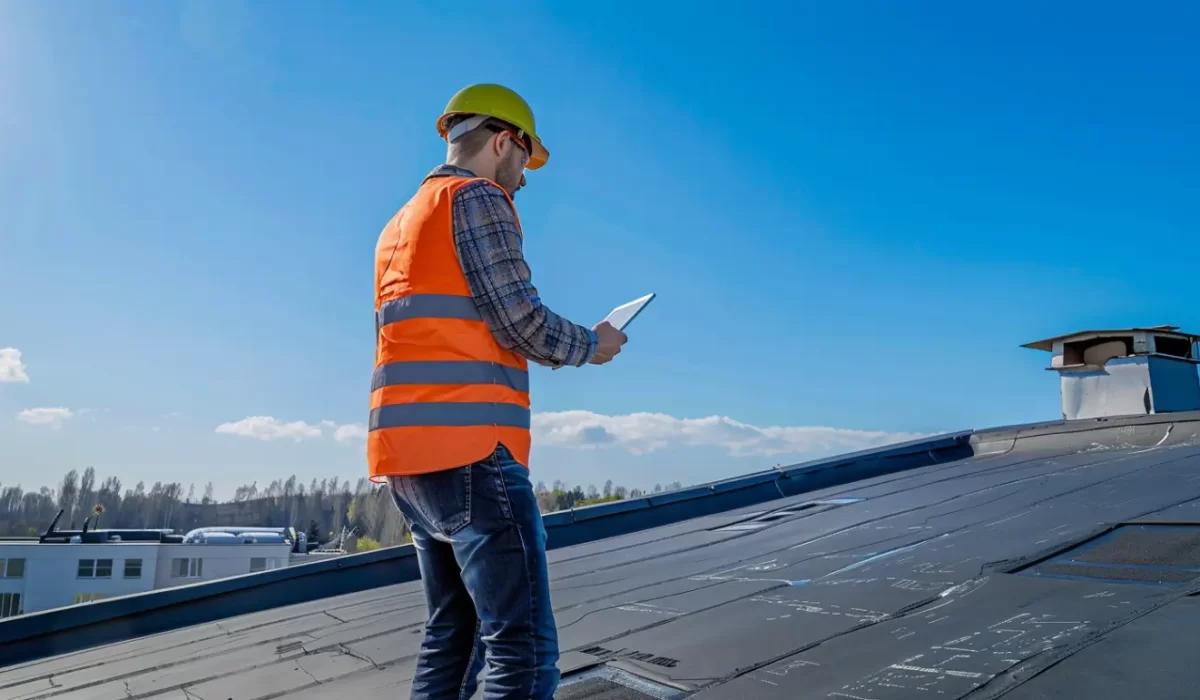Implementing roof upgrades in occupied buildings necessitates a comprehensive approach that prioritizes both the integrity of the roofing project and the comfort of residents. At Fontaine Roofing in Orange County, CA, we understand that sound management strategies—such as careful selection of low-noise materials and installation techniques—can significantly diminish disruption. Effective communication with tenants and facility management ensures everyone is informed, fostering an environment of trust and understanding. Striving for minimal noise levels not only aligns with local building codes but also enhances the overall efficiency of roofing operations, ultimately benefiting all stakeholders involved.
Understanding Quiet Roof Upgrades in Occupied Buildings
Quiet roof upgrades in occupied buildings demand careful planning and compliance with local codes to minimize disruption. Utilizing sound-dampening materials and innovative techniques improves energy efficiency and occupant comfort. As a GAF Master Elite Contractor and Certainteed Shingle Master, we prioritize quality in roofing and can perform minor repairs. Our Polyglass Preferred Contractor status and IB Roofing Systems Authorization underscore our commitment to clear communication and strategic scheduling for maintenance without disrupting daily activities. Our TRI certification and memberships in CACM, CAI, and NRCA reflect our dedication to industry standards, enhancing tenant satisfaction and ensuring project success.
Contact Us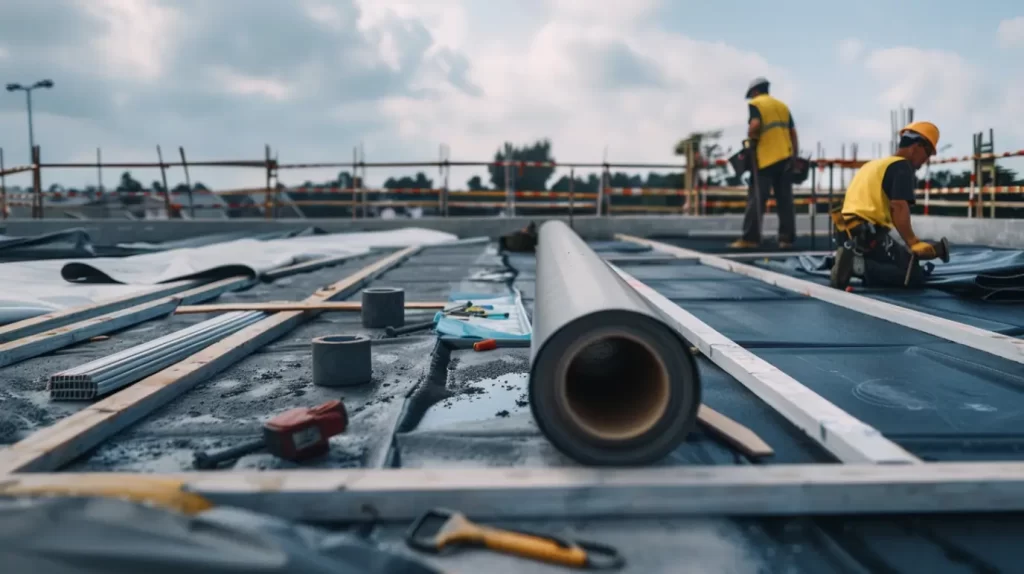
Key Challenges Property Managers Face During Roof Upgrades
Navigating roof upgrades poses challenges for property managers. Effective communication with tenants and compliance with local building codes are crucial for success. Proper planning is needed to minimize disruption, especially in occupied buildings where tenant comfort is key. Choosing energy-efficient roofing materials while managing installation noise, considering the local climate, adds complexity. Timely inspections and addressing potential mold or ventilation issues further complicate the project, necessitating a thoughtful and strategic approach focused on quality and tenant satisfaction.
Why Minimizing Noise and Disruption Matters for Residents and Businesses
A calm environment is essential for both residents and businesses, as excessive noise and disruption can lead to dissatisfaction and decreased productivity. Disruptions during roof upgrades can interfere with daily routines, impacting tenant comfort and employee focus. Employing sound-dampening techniques and thoughtful scheduling not only enhances energy efficiency but also ensures compliance with local building codes. Proper planning and clear communication between property managers and occupants foster peace of mind, making the project smoother and reinforcing positive relationships.
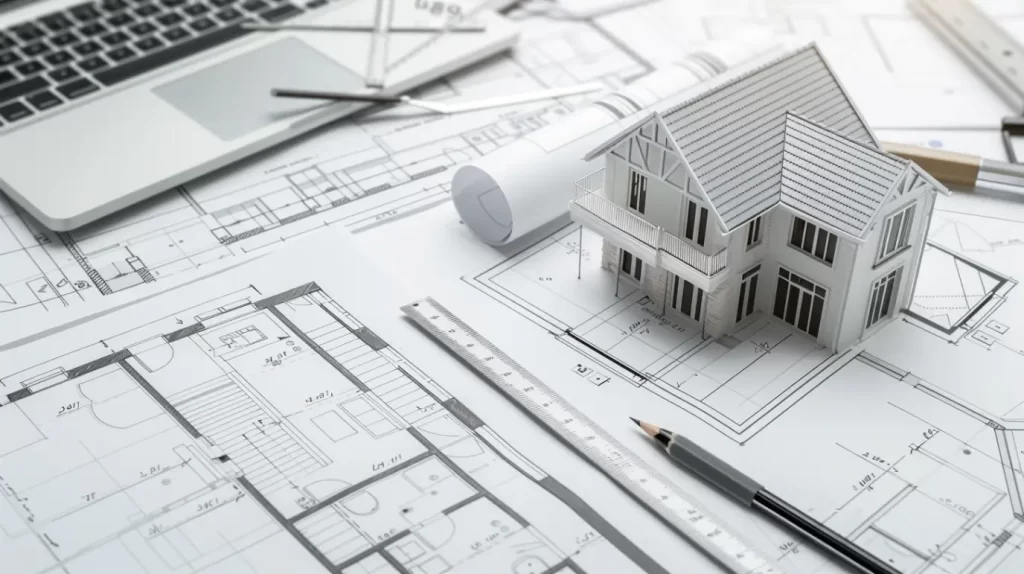
Strategic Planning for Noise-Free Roofing Projects
Effective strategic planning is critical for executing noise-free roofing projects that respect the daily routines of occupants. By meticulously scheduling work to align with non-peak hours, property managers can significantly reduce disturbances. Clear communication with tenants and facility managers is essential in this phase, as it fosters collaboration and understanding. Utilizing advanced options such as off-site prefabrication can also enhance efficiency while maintaining compliance with local building codes, ensuring a seamless operation that prioritizes peace of mind amidst necessary upgrades.
Scheduling Work to Avoid Daily Routine Conflicts
Effective scheduling is crucial for minimizing disruptions during roof upgrades. Coordinating work hours, including early morning shifts, with tenants and businesses ensures that roofing activities do not interfere with daily routines. Identifying low-traffic periods, such as late mornings or early afternoons, can significantly reduce noise levels and enhance productivity. By consulting with facility managers and utilizing advanced planning techniques, property managers can create a timeline that balances the needs of occupants with project timelines. This approach fosters clear communication and aligns expectations, promoting a smooth roofing project.
Coordinating with Tenants, Facility Managers & HOAs
Successful quiet roof upgrades require coordination with tenants, facility managers, and homeowners associations (HOAs). Clear communication, including via email, is essential for timely updates on project timelines, schedules, and potential disruptions. Engaging stakeholders early ensures their concerns are addressed, fostering collaboration throughout the roofing project. By incorporating feedback from all parties, property managers can tailor upgrade plans to meet specific needs, enhancing efficiency and minimizing inconvenience. Ongoing communication also facilitates immediate issue resolution, keeping the project on track and meeting expectations. Prioritizing collaboration helps property managers execute quiet roof upgrades while maintaining positive relationships with tenants and HOAs.
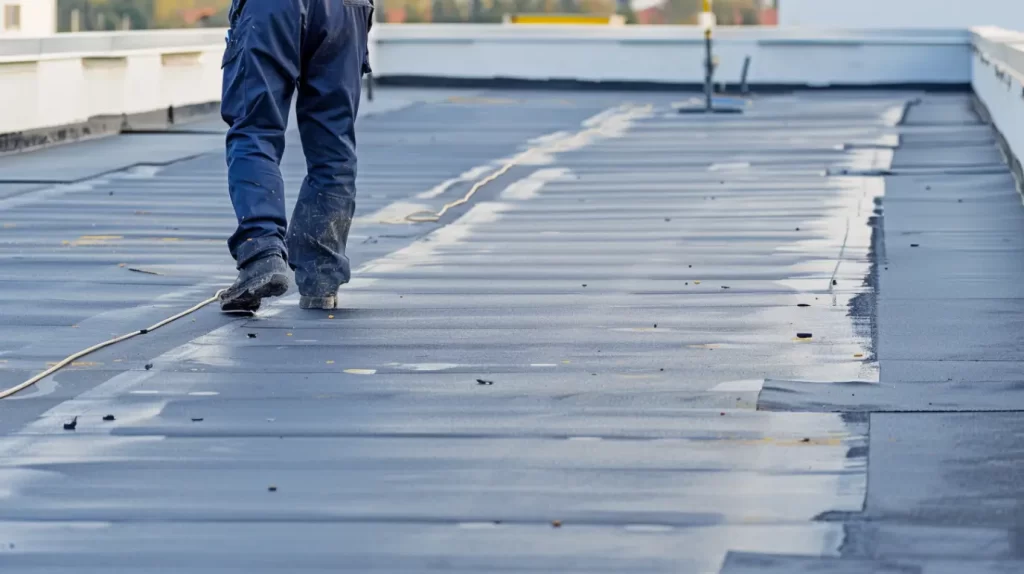
How to Select Quieter Roofing Options
Innovative roofing materials designed for noise reduction and structural integrity are perfect for upgrades in occupied spaces. Products like sound-dampening underlays enhance energy efficiency and ventilation, significantly reducing noise during a new roof installation for a more comfortable environment. Advanced techniques such as low-impact equipment and precision alignment ensure seamless integration of roofing layers, minimizing disruption. Partnering with a professional roofing contractor experienced in quiet solutions provides peace of mind for residents, respecting their daily routines. This considerate approach leads to successful projects that prioritize occupant needs.
Quiet-Install Modern Roofing Systems
Incorporating advanced engineering, modern roofing systems prioritize noise reduction through innovative installation techniques. These systems utilize low-noise materials that comply with local building codes while enhancing energy efficiency. A roofing contractor well-versed in these technologies can effectively implement solutions that minimize disruption during projects. Utilizing proper ventilation and sound-dampening underlays ensures both the lifespan of the roof and occupant comfort. Such measures provide property managers with peace of mind, knowing their upgrades will maintain a harmonious living or working environment.
How to Use Underlays and Insulation for Sound Control
Sound-dampening underlays greatly enhance acoustic performance in roofing projects, making them ideal for noise-sensitive environments. Choose high-density materials designed to absorb sound and reduce vibrations effectively. Proper insulation is vital as it boosts energy efficiency and minimizes sound transmission, ensuring a comfortable living space. Techniques like advanced air sealing prevent noise from leaking through roofing gaps, crucial for maintaining tranquility. Working with professional roofing contractors familiar with local building codes ensures these practices meet standards while enhancing tenant satisfaction, resulting in a smooth upgrade process.
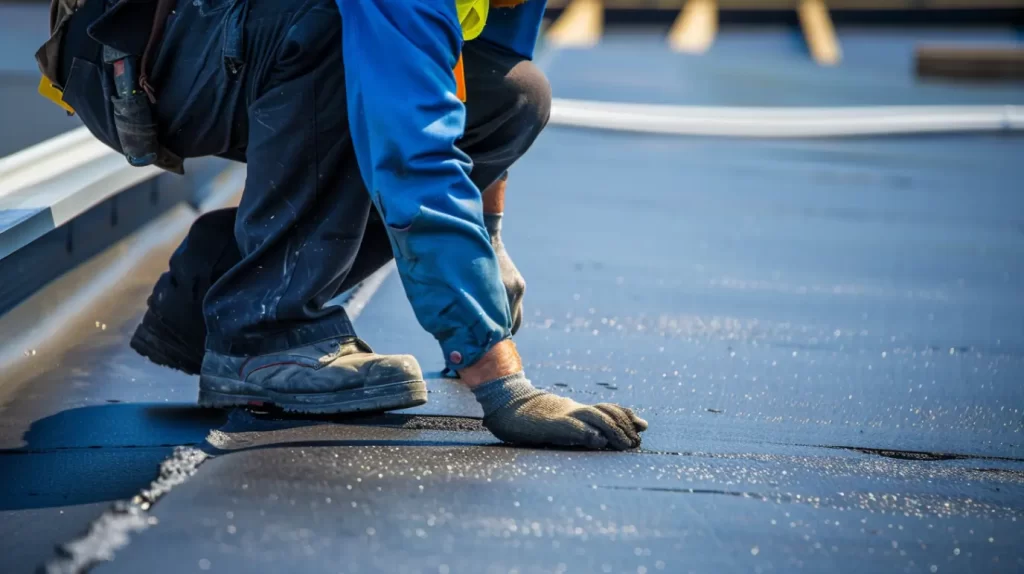
New Building Methods to Reduce Noise
Strategic use of off-site prefabrication allows for reduced on-site noise by minimizing time spent in active work environments. This method not only enhances efficiency, but also ensures adherence to local building codes while providing cost savings through quicker installation. Incorporating advanced equipment further mitigates disturbances, such as synchronized lifts or low-noise machinery, which are specifically designed for commercial applications. Emphasizing clear communication with all stakeholders before undertaking a roofing project ensures a seamless process, fostering peace of mind for residents and property managers alike.
Prefabrication and Quick Build Techniques
Off-site prefabrication allows roofing contractors to construct components in a controlled environment, ensuring quality and minimizing waste. This approach not only accelerates project timelines but also mitigates noise levels during installation, as fewer activities occur on-site. Rapid assembly techniques further enhance efficiency by simplifying the installation process, reducing labor-intensive work, and adhering to strict local building codes. Proper planning using these modern methods assures tenants of minimal disruption, ultimately fostering a collaborative atmosphere between property managers and residents throughout the roofing project.
Equipment Designed to Limit Jobsite Disturbance
Utilizing advanced equipment boosts roofing project efficiency and minimizes disturbances for occupants. Low-noise tools and innovative machinery reduce noise while ensuring compliance with building codes, eliminating the need for indoor mechanical rooms. By implementing these techniques, contractors can expedite tasks without compromising energy efficiency or structural integrity. This approach provides peace of mind for property managers and tenants, allowing essential upgrades to proceed smoothly during peak hours. Employing skilled personnel ensures swift, high-quality work, fostering a positive environment for all involved. Ultimately, this strategy protects occupant comfort and enhances the property’s overall value through effective renovations.
Commercial Building Upgrade During Business Hours
Executing a commercial roof upgrade during business hours demands meticulous planning and clear communication. Coordinating work schedules with tenants minimizes interference with daily operations, ensuring that essential activities remain uninterrupted. Utilizing advanced installation techniques paired with sound-dampening materials can significantly reduce noise levels. Furthermore, professional roofing contractors can complete inspections and address any necessary repairs efficiently, thereby enhancing occupants’ peace of mind. Addressing local building codes and proper ventilation during upgrades also ensures compliance and energy efficiency throughout the project.
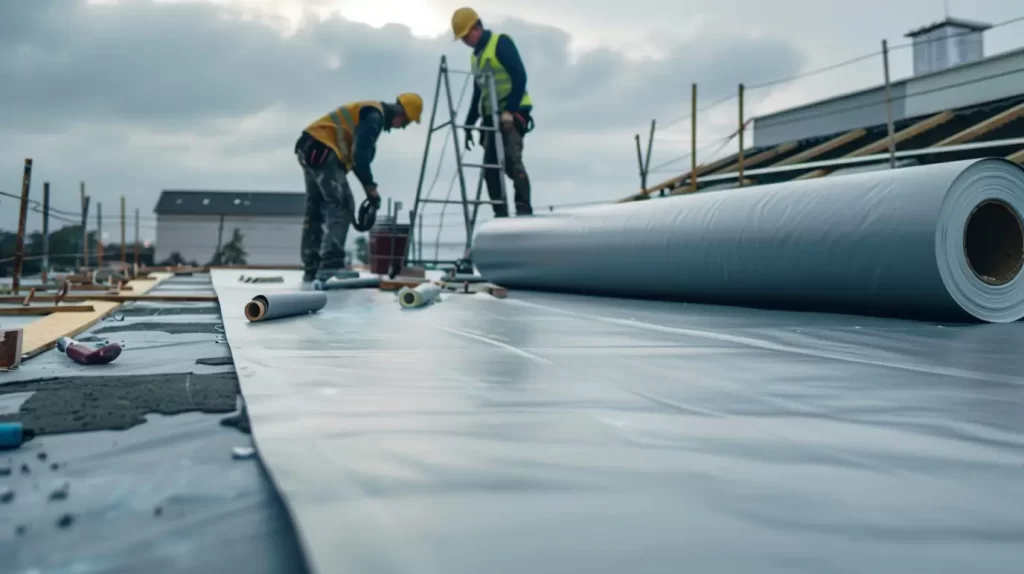
Noise Differences: Roof-Over vs. Full Replacement
Exploring the nuances between roofing over existing shingles and opting for a full replacement reveals distinct noise implications. Overlaying existing layers often leads to reduced noise during installation, benefiting both residents and businesses. However, potential downsides include compromised ventilation and insulation, which could affect energy efficiency in the long term. Full replacements might result in elevated sound levels, yet they provide the advantage of extending the roof’s lifespan. Ultimately, informed decisions ensure minimal disruption while adhering to local building codes.
Pros & Cons for Occupant Experience
Upgrading a roof entails weighing various factors impacting occupant experience. On the one hand, noise reduction techniques can significantly enhance tenant satisfaction during the roofing project. Efficient, low-noise materials lead to an improved environment, fostering energy efficiency and comfort. Conversely, disruptions, even if minimized, may still evoke frustration, particularly in commercial applications. Clear communication regarding timelines and expectations plays a crucial role in assuring residents, ultimately guiding them toward informed decisions. Balancing these pros and cons is essential for a successful upgrade.
When to Choose a Roof Overlay
Overlaying shingles is practical when the existing ones are in good condition. This method reduces noise and disruption, making it a preferred choice for many projects. It’s cost-effective, minimizes landfill waste, and shortens project timelines. However, ensure the roof’s structural integrity is intact and check local building codes to confirm if overlaying is permitted. A roof inspection is essential to assess these factors to determine if this approach suits your roofing needs.
What’s Next
Strategic planning is essential for successful quiet roof upgrades in occupied buildings. By selecting appropriate methodologies and materials while ensuring clear communication with residents and stakeholders, property managers can achieve significant cost savings and enhance energy efficiency. The right approach minimizes disruption and maintains peace of mind for tenants. Investing in modern roofing solutions not only helps to preserve harmony but also aligns with local building codes, promoting longevity and safety for the entire community. For expert assistance with your roofing needs, contact us at Fontaine Roofing in Orange County, CA.
Read our blog: Recoating vs. Replacing Flat Roofs: What’s Better Long-Term?
Frequently Asked Questions
How noisy is a roof replacement?
Roof replacement can generate significant noise, often ranging from 70 to 90 decibels during the installation process, especially in cases of heavy rain. This sound level can disrupt daily activities and lead to discomfort for occupants, making it crucial to plan carefully to minimize disturbances throughout the project.
Is replacing a roof a repair or improvement?
Replacing a roof typically qualifies as an improvement rather than just a repair. It enhances the property’s value, energy efficiency, and aesthetics while potentially extending its lifespan. Additionally, a well-planned roof upgrade can significantly reduce energy costs and improve indoor comfort for occupants. Understanding this distinction is crucial for property managers to communicate effectively with occupants about the numerous benefits of such upgrades, ensuring that everyone is informed and onboard throughout the process.

